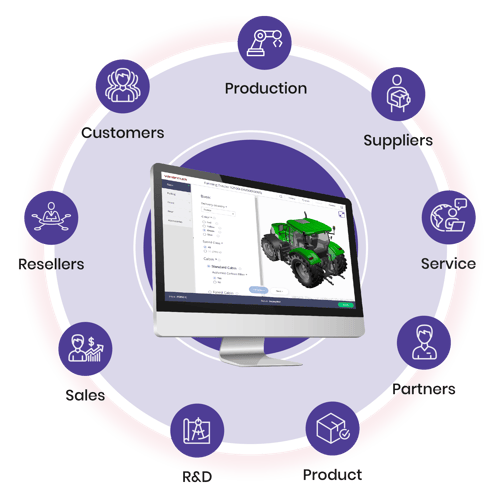Variantum is now part of Tacton!
How Offering Management can help the Car Industry?

Automotive industry
Essentially, the most visible change and the root cause is in how people are buying cars.
Think about how cars were bought 20 years ago? You did some background research about the models on the market and reflected them onto the features you needed. Then you visited the dealership, did a test drive and ended up buying the particular car they happened to have at the dealership. Regardless of the fact that the color of that individual car wasn’t exactly the one you were looking for, and you originally didn’t plan your budget with that performance chip in mind. Anyway, the sales person did a good job pitching.
After purchasing a car and paying good money for it, you drove the car for as long as you could until no maintenance repairs or services could save it anymore. Another choice was paying for annual or seasonal maintenance services and hoping to get a good deal for trade-in. One thing has always been sure - after you take the car out of the store it will only lose its value.
How is Offering Management changing car companies now and in the future?
How people buy cars today hasn’t actually changed that much. Yet. Instead of going to the dealership, you enter the website, choose the car model and configure it with your preferences. Now, instead of placing the order and waiting for the delivery, you still - in most cases - have to visit the dealership to place the order.
Even though people tend to have strong values and feelings attached to car brands, the consumer mindset is inevitably shifting from ‘buying a car’ to ‘buying mobility’, or sometimes ‘buying lifestyle’. Driven by this shift, car manufacturers are aggressively sculpting their offerings to meet the changing market demand.
Offering Management as the key driver to new business models

Car manufacturers have started to aggressively implement Offering Management -strategy. Yet, most of the companies are in the early stages of Offering Management evolution. Here is what kind of steps we believe the automotive industry will take shape in the future.
1. Physical product
The typical car company. The offering consists of car models and the customer can configure the car according to preferences at the time of purchase.
2. Product with value-added services
Car companies that have expanded to other business models, like car maintenance services or retrofittable features such as performance or economy improving firmware updates.
3. Car as a service
Companies provide an end-to-end service where the car is the key asset. An example of this is a car subscription service for 30 000 kilometers of driving for dynamic pricing which is based on the data extracted from your driving style and conditions.
4. Open interfaces and mobility as a service (MaaS)
The ecosystem model where the car as a service model can be seamlessly integrated into a third-party platform. This platform can be for example a MaaS platform, an external maintenance bidding platform, or a combination of many different platforms. These new business models create new income and data streams for the car manufacturer and thus generate an unmatched capability to respond to changing demand.
Summary
At the core of this transformation is automation made possible by data and intelligent product configurability. This enables streamlined adaption to changes in market requirements and customer demand.